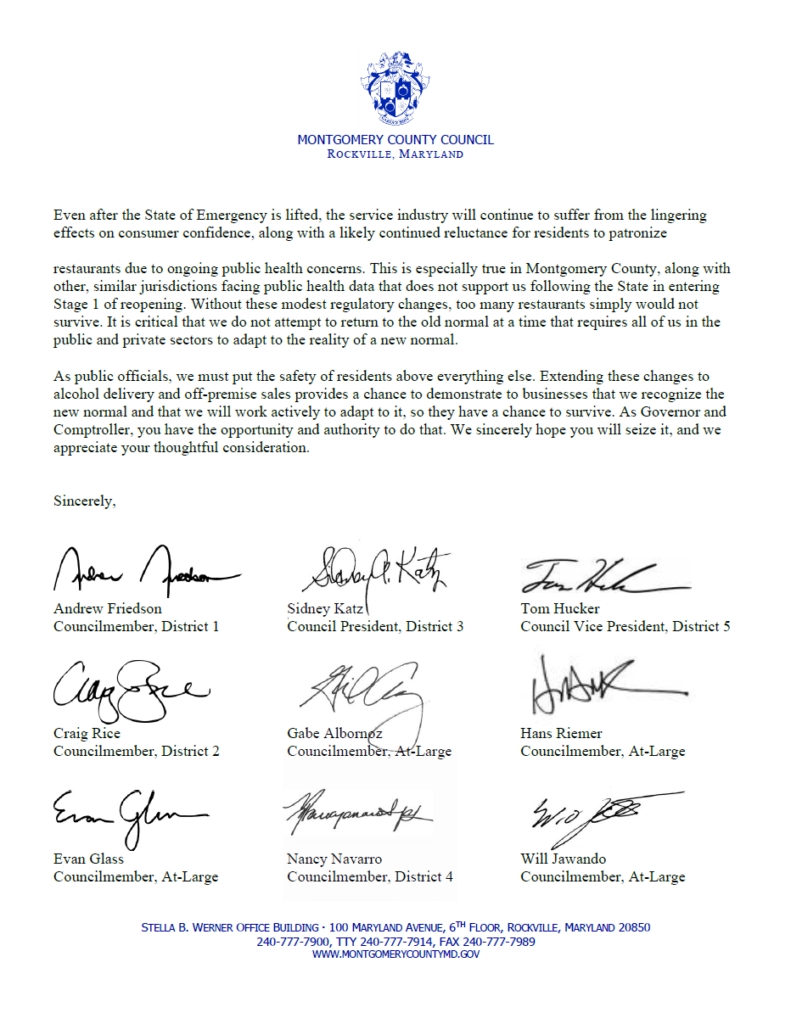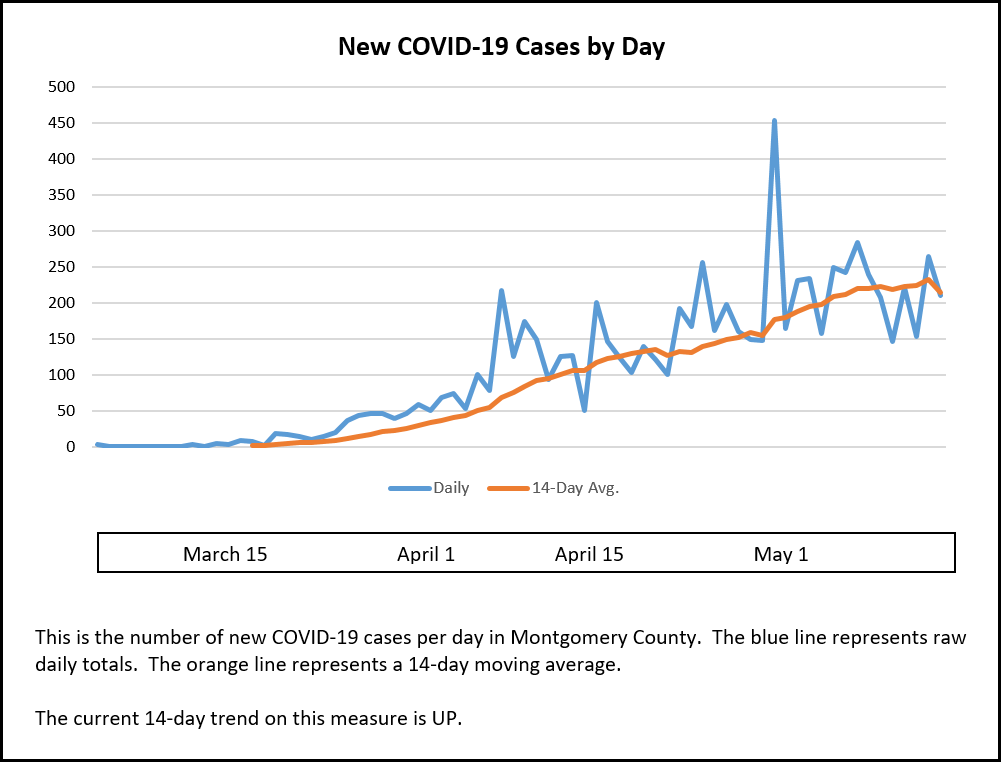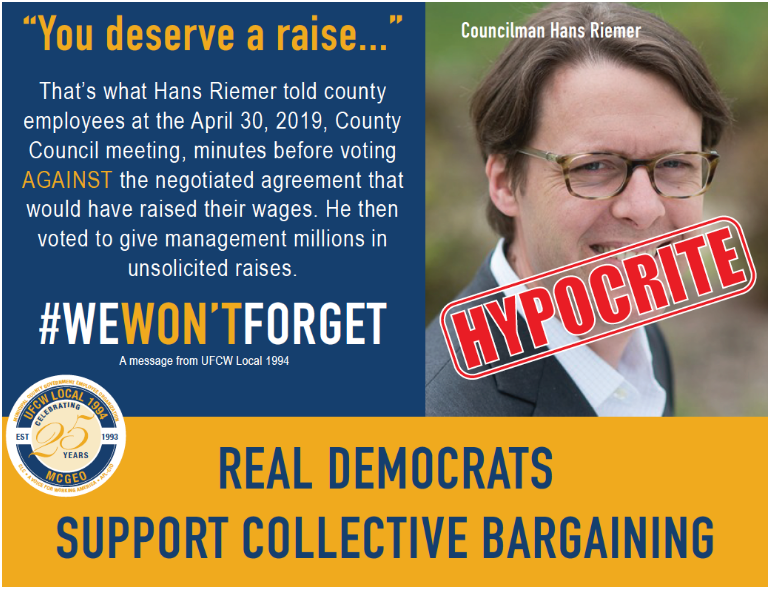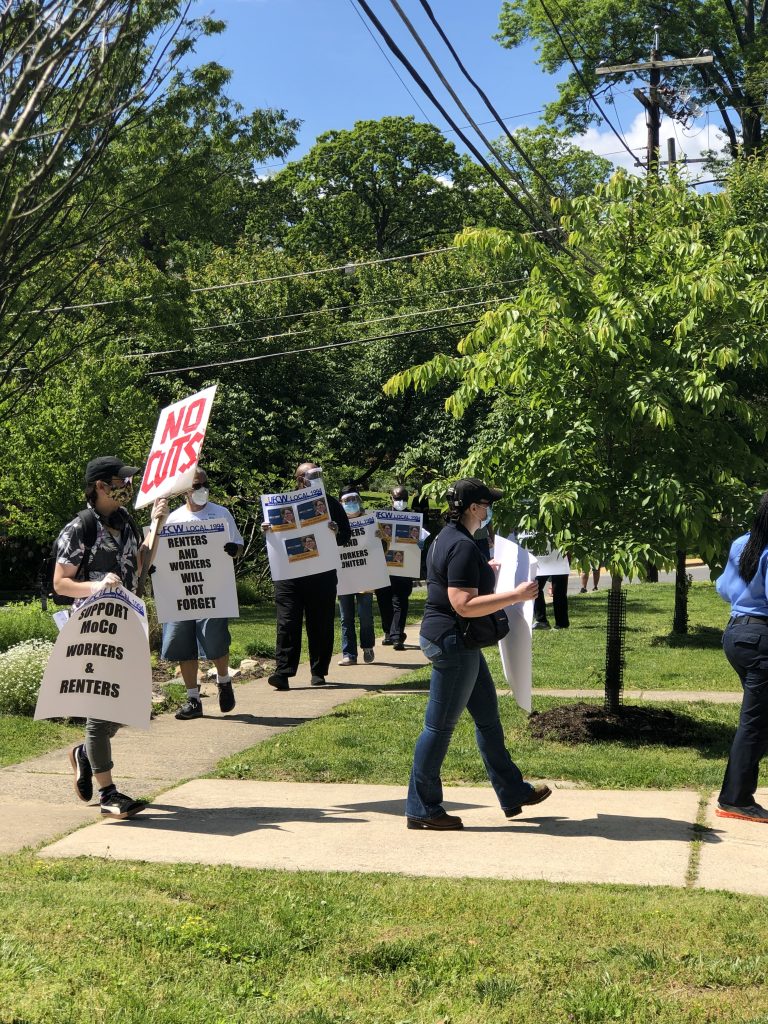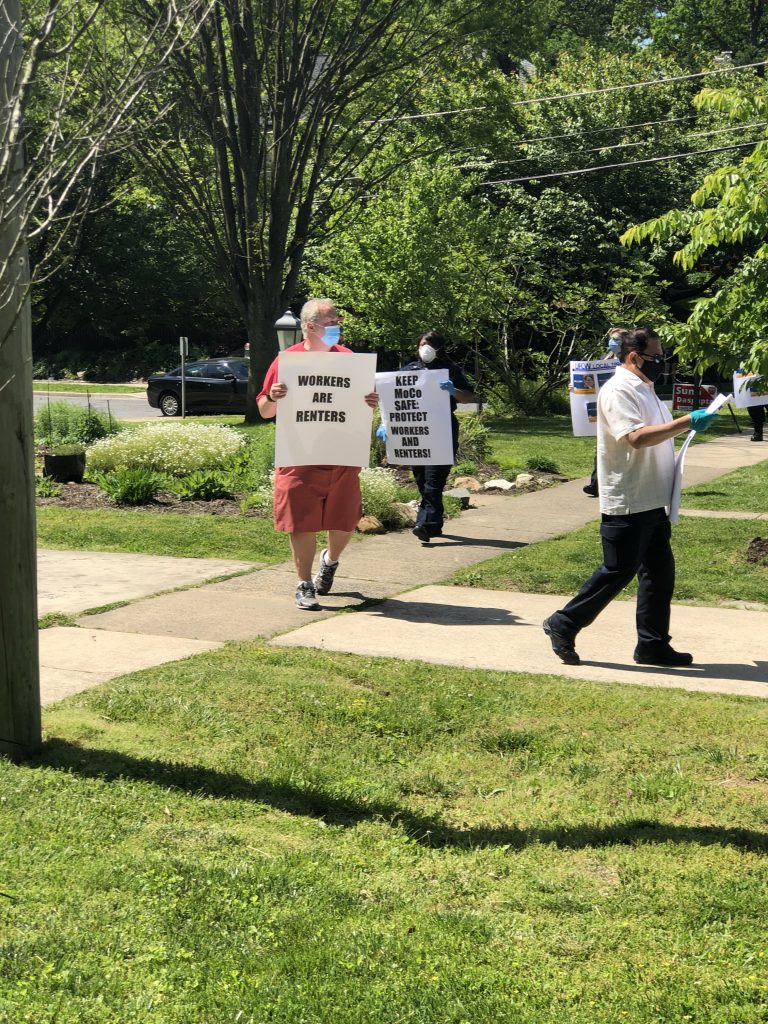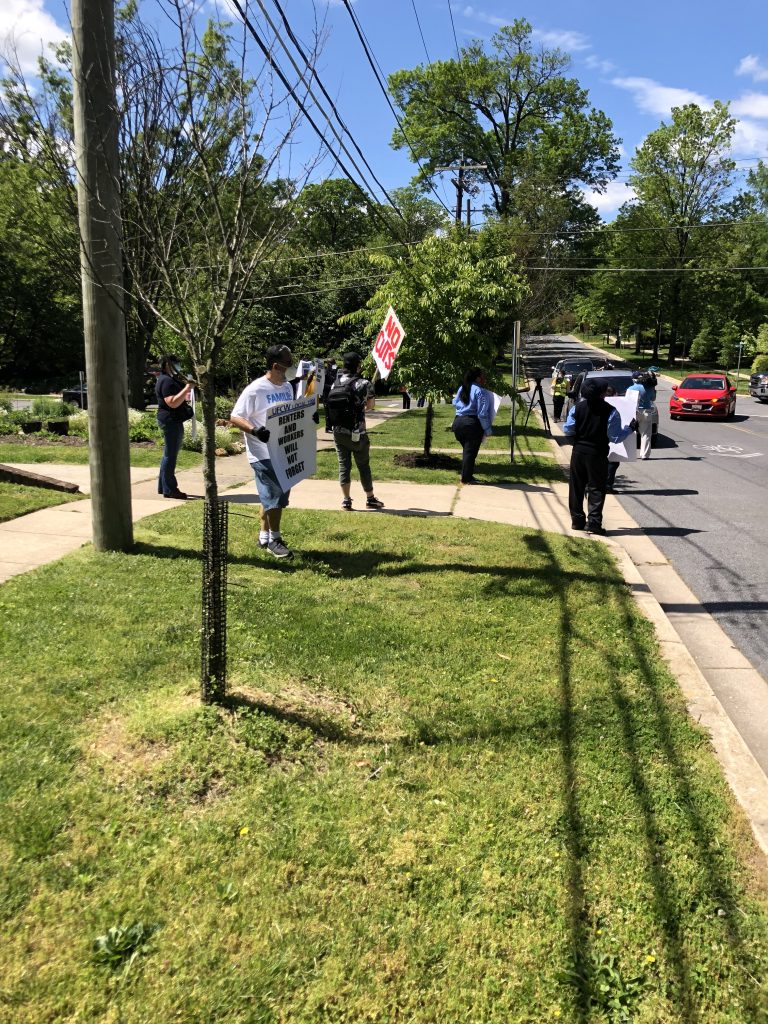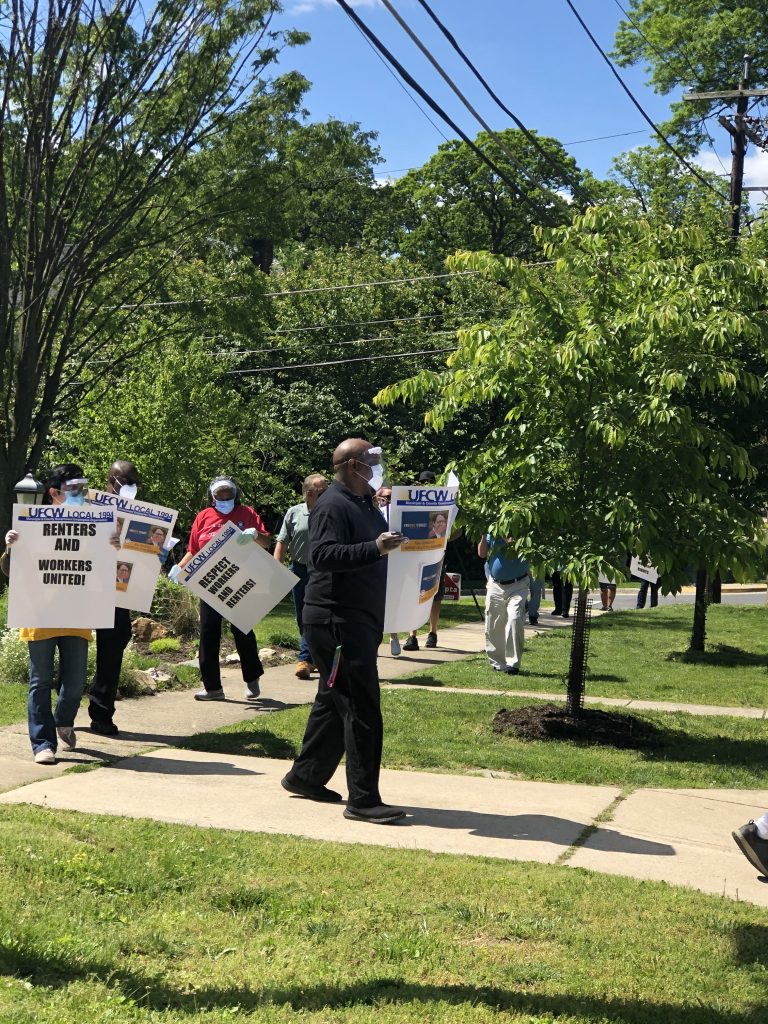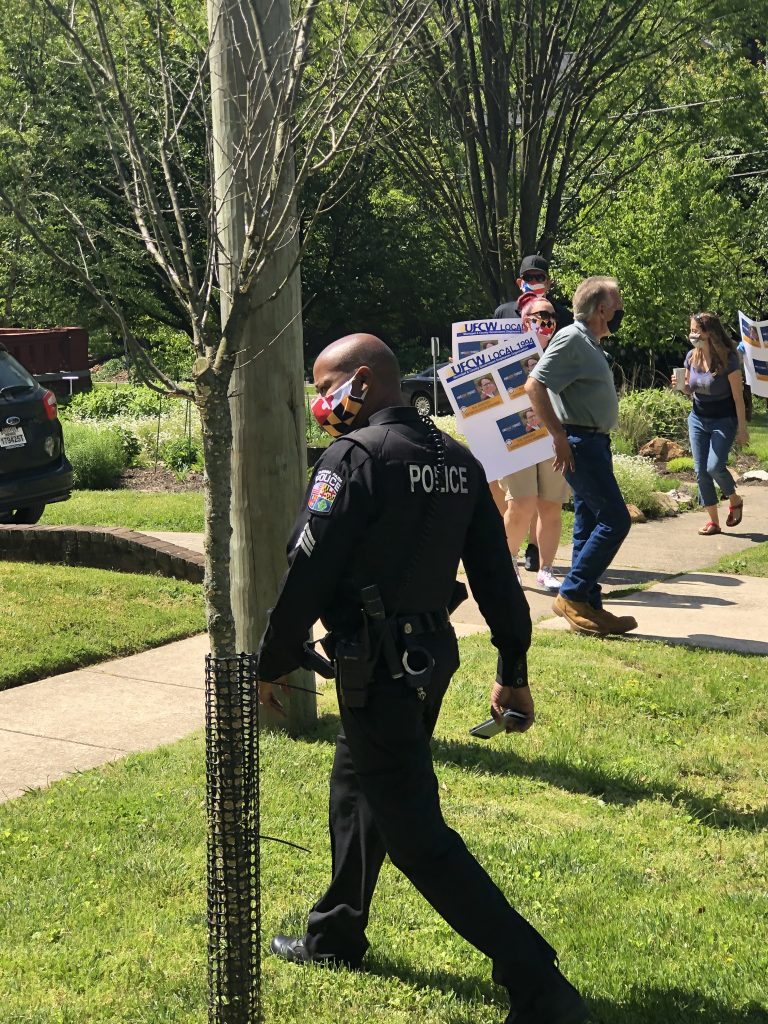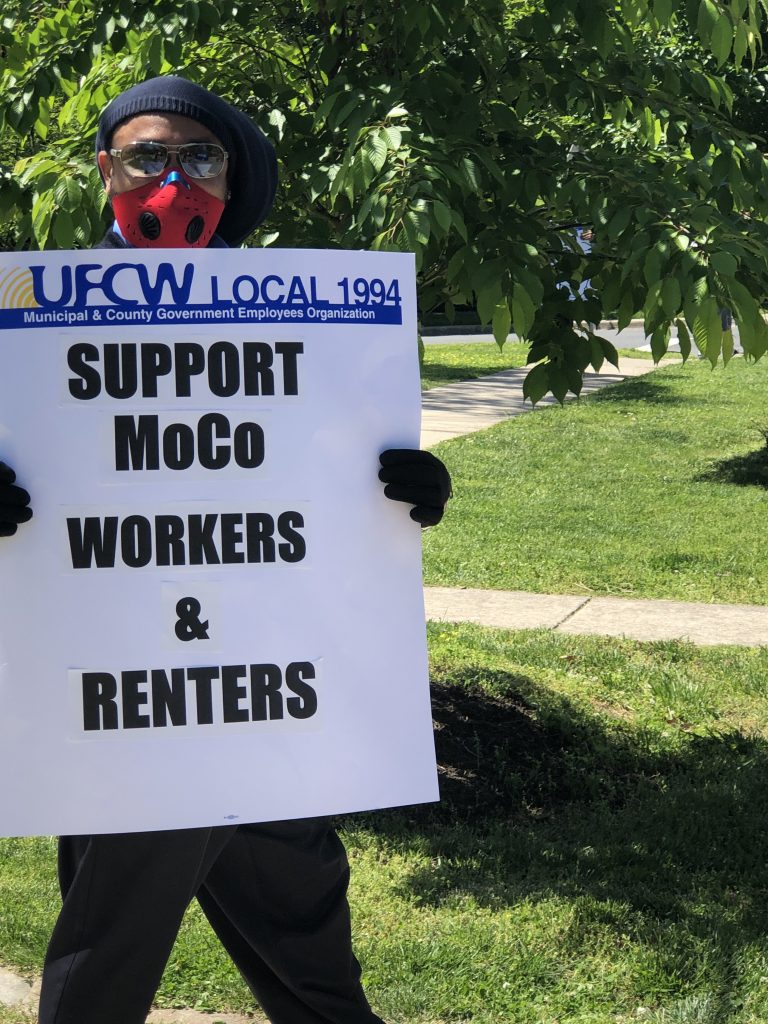By Adam Pagnucco.
The second round of campaign finance reports covering contributions and expenditures in the school board race were due yesterday. They cover campaign activity through May 17 and are the last reports to be released before the June 2 primary. The table below presents cumulative totals combining the first and second reports for all candidates. Those with data marked “NA” filed affidavits stating that their campaigns did not collect or spend more than $1,000 for the reporting period.
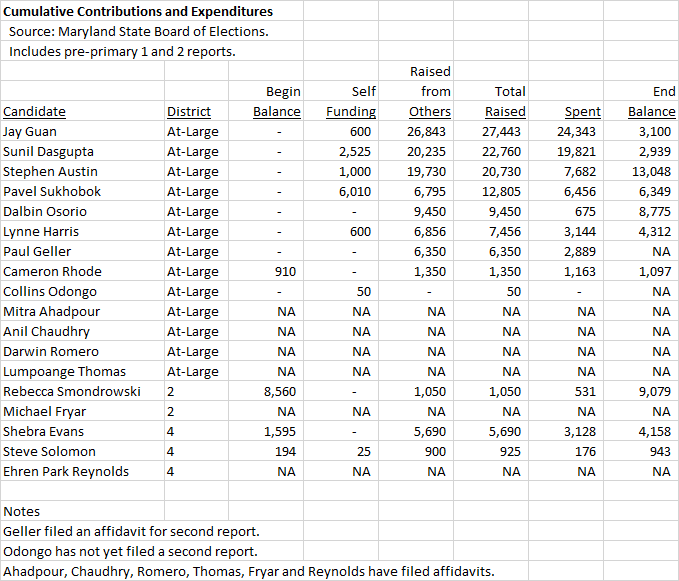
In the at-large race, Jay Guan is the leader with $27,443 raised, followed by Sunil Dasgupta ($22,760) and Stephen Austin ($20,730). Lynne Harris, who was endorsed by the Washington Post, ranks 6th with $7,456 raised. The district races were quiet.
These are small amounts of money compared to county executive, county council and state legislative races, but Guan, Dasgupta and Austin have all done pretty well for school board candidates. Here is how their totals compare to other (relatively) well-financed school board candidacies in the primary over the last decade.

So far, the single largest expenditure by any candidate in the race is Guan’s mailing of a postcard in early May, which cost $13,861. However, the Maryland State Education Association, which has endorsed Dasgupta, sent out a glossy mailer on his behalf shortly afterwards. That mailer’s cost is not available from campaign finance records but almost certainly exceeds the cost of Guan’s mailer.
Facebook’s political ad tracker shows that Dasgupta has spent more money on Facebook ads than the rest of the at-large field combined.
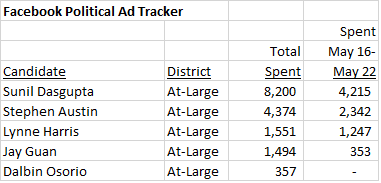
So far, the most expensive Facebook ad in the race has been this one by Dasgupta which promoted some of his endorsements.
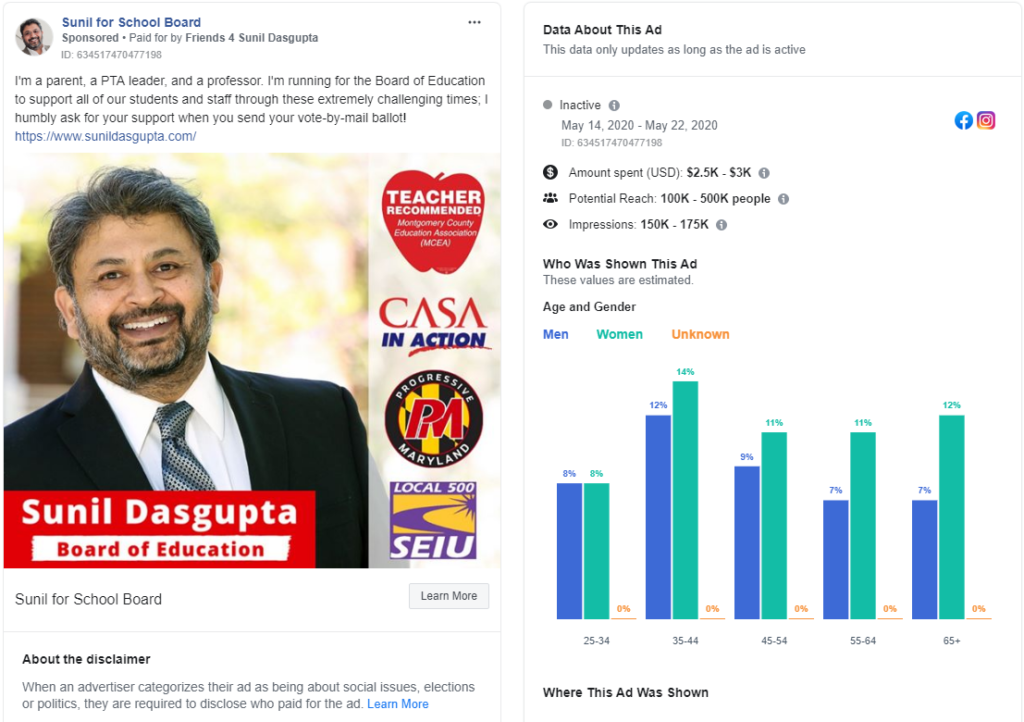
The second most expensive Facebook ad was this one by Austin attacking Harris. Austin may be calculating that if he can knock out Harris, he will enter an insider vs outsider general election against Dasgupta.
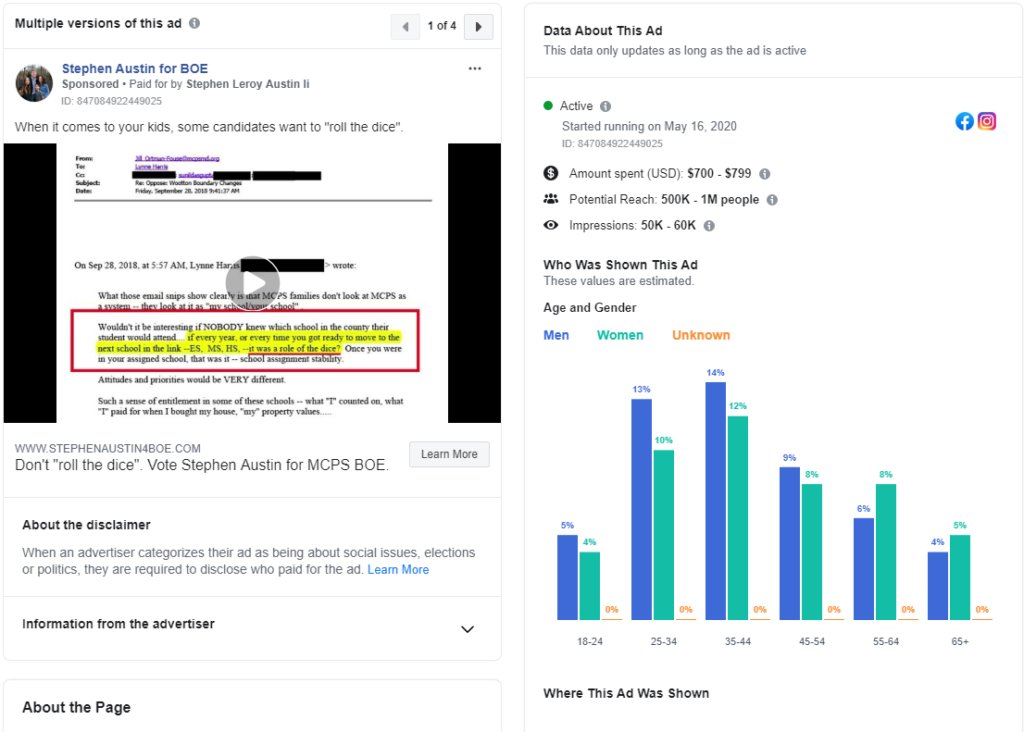
Combining his own spending with the independent expenditures of the teachers union, Dasgupta may be running the most vigorous campaign overall. Harris’s money problems are impeding her ability to publicize the Post endorsement, which should worry her supporters. Austin has done well to keep pace financially with Dasgupta despite the latter’s endorsement by multiple unions and numerous elected officials. The big question is what Austin plans to do with his $13,048 cash balance. If he had spent it on Facebook ads, he would easily have outspent Dasgupta. Either he is saving it for a last push or he is banking some money for the general election.
Following is a list of the most prominent contributors to Austin, Dasgupta, Guan and Harris.
Stephen Austin
Coalition for Better Montgomery PAC: $3,000 (Note: this contribution was criticized by One Montgomery, which earned a response from Austin.)
Alexander Bush, Chairman, Montgomery County Republican Party: $500
Pete Fosselman, Former Mayor, Town of Kensington: $100
Sunil Dasgupta
MSEA Fund for Children and Public Education: $3,500 (Note: this is the state teachers union. The county teachers union has endorsed Dasgupta.)
SEIU Local 500: $1,000 (Note: this union represents support staff in MCPS and has endorsed Dasgupta.)
Sidney Katz, Montgomery County Council Member: $250
Eric Luedtke, Delegate: $250
Jeffrey Slavin, Mayor, Town of Somerset: $250
Casey Anderson, Chair, Planning Board: $100
Aruna Miller, Former Delegate: $100
Mark Pierzchala, Council Member, City of Rockville: $100
Steve Silverman, Former Montgomery County Council Member: $100
Vaughn Stewart, Delegate: $100
Partap Verma, Planning Board Member: $100
Neil Harris, Council Member, City of Gaithersburg: $50
Dan Reed, Author, Just Up the Pike: $50
Hans Riemer, Montgomery County Council Member: $50
Jay Guan
Lily Qi, Delegate: $500
Lynne Harris
Diana Conway, President, Women’s Democratic Club: $300
Marc Elrich, Montgomery County Executive: $100
Tom Hucker, Montgomery County Council Member: $100
Jill Ortman-Fouse, Former School Board Member: $100
Al Carr, Delegate: $50


